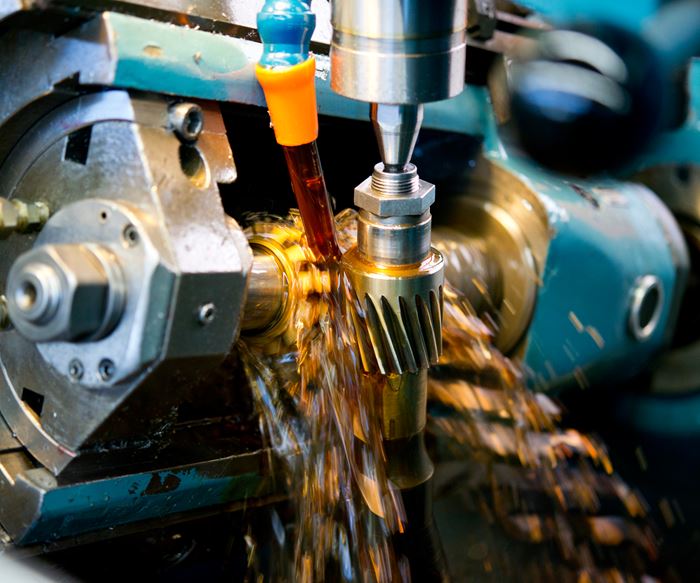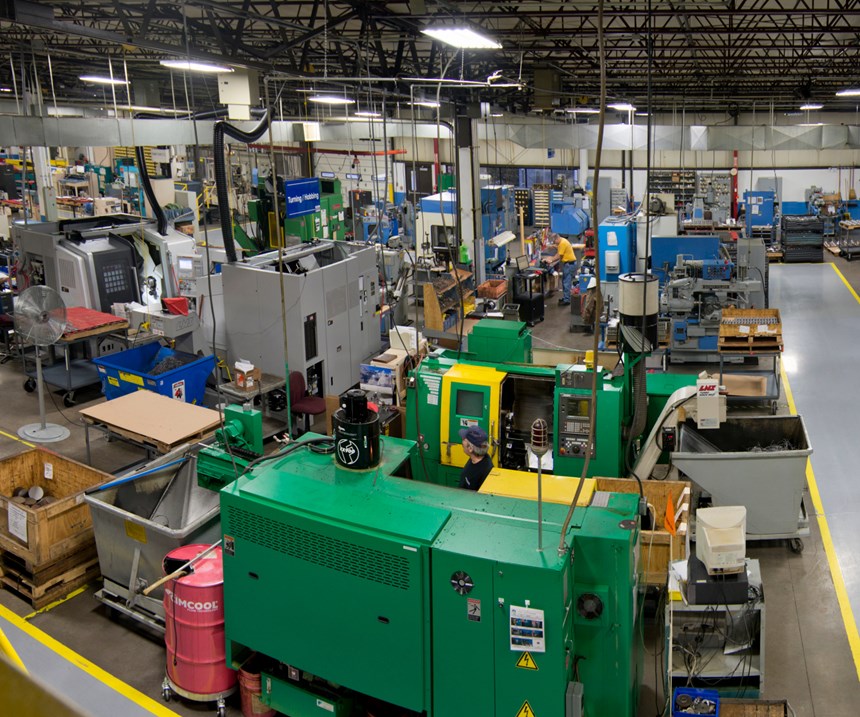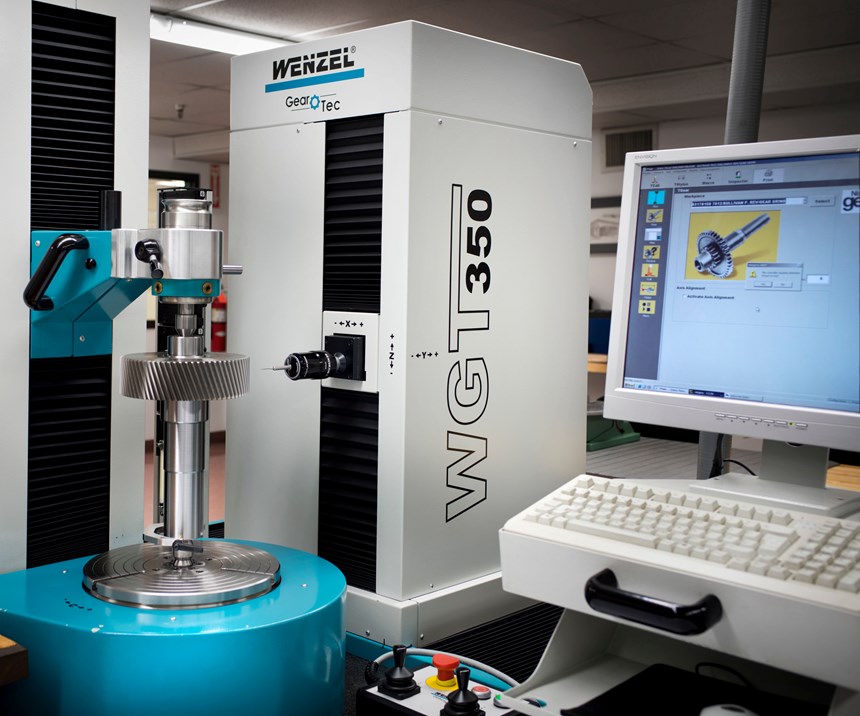ERP System Enables Gearmaker to Achieve Needed Agility
ERP software enabled a New York gearmaker to improve scheduling practices to meet the increasing demands of customers.
Share




For years, Gear Motions managed its business with an enterprise resource planning (ERP) system that lacked the ability to track data in real time. It relied on users to manually input data in order to update the system. Because of this, changes to schedules or supplier deliveries could render it useless. Without real-time information on stock and machine space availability, the company’s ability to accurately quote potential customers suffered at a time when customer demands were increasing.
Three divisions comprise western New York’s Gear Motions, which distributes its products domestically and abroad. The company’s services include gear grinding and cutting; turning; milling and drilling; broaching and keyseating; inner diameter (ID) and outer diameter (OD) grinding; ID honing; and inspection. It can manufacture gears ranging from a fraction of an inch to as large as 6 feet in diameter.
Providing this array of services became increasingly difficult to schedule and cost because customers want product a lot quicker than they used to, says plant manager Dan Bartelli. Jobs that used to take eight to 10 weeks to complete are now expected in three to five weeks, he says.
The time crunch provided a significant challenge to the business. Cutting machining time in half meant that supplier delays and machine scheduling could significantly affect its ability to meet customers demands.
Making Information Accessible
To remedy this, Gear Motions turned to Global Shop Solutions’ ERP system, which was able to provide accurate, up-to-date information on all aspects of the company’s operation. According to materials manager Dan Sierotnik, “Information from suppliers automatically updates, and it pulls information from different parts of the company together to make scheduling more intuitive.”
Various modules comprise the software to provide detailed information about the shop, including which jobs are in progress, who is logged into a machine, what order a user is working on and how far along a job is. According to Suzanne Waters, director of accounting and information technology, the ERP system helps get the product out quicker by providing a more global view of the shop floor. “It also helps us order and purchase materials more efficiently by showing what we have in inventory, how much we need to order and the lead times for purchasing those materials,” she says. Further, as a modular product, the shop only needs to implement the modules that specifically speaks to its needs.
One of the biggest draws for Gear Motions was the Advanced Planning and Scheduling (APS) module, which assists in scheduling jobs. “Scheduling with APS enables us to execute more effectively because it gives detailed views from a job, department and entire shopfloor perspective,” Mr. Bartelli says. “It provides many different ways to slice and dice the data, so we can tell what we need to do and when to meet tighter shipping deadlines.” This provides the company with better information for both short- and long-term planning.
Mr. Bartelli says he feels confident in the data’s accuracy and uses it to make necessary adjustments to meet customer deadlines. “The system automatically updates the data every five minutes, so we can see exactly what’s going on in the shop in real time,” he says. “This allows us to act in the moment rather than looking at a report a month later and saying we should have done something differently.”
The Supply and Demand module has also proven to be helpful. It enables the user to bring numerous pieces of data together on one screen, including work order, sales and purchase history. By bringing this data together in an easy-to-understand format, the system enables Gear Motions to be more accurate in costing and quoting. “It gives us a very efficient quality check process to make sure we did things right and correct things when we did not,” Ms. Waters says.
Reinforcing Company Culture
The company uses the ERP software to create custom Crystal reports. One of these reports tracks output for machine operators on a daily basis, providing a powerful feedback tool for improving performance and accountability. According to Ms. Waters, the company prints a copy of this report and gives it to all machine operators each day. The report shows which jobs they worked on the day before, when they started and ended, how many parts they completed or scrapped, and so on. It also identifies setup time, indirect time and whether they forgot to log in or out of a particular sequence, she says.
However, the company says it does not use the reports punitively. It is not a tool for spying, but for helping operators to review their work and make corrections. “The report gives operators the ability to validate their input from the day before and make adjustments when needed,” Mr. Bartelli says. “They also like seeing how their performance compares to engineering standard.” The company worked hard to create a culture of feedback and open communication. Providing reliable performance data without judgment is part of maintaining that culture.
Related Content
ERP Provides Smooth Pathway to Data Security
With the CMMC data security standards looming, machine shops serving the defense industry can turn to ERP to keep business moving.
Read More5 Tips for Running a Profitable Aerospace Shop
Aerospace machining is a demanding and competitive sector of manufacturing, but this shop demonstrates five ways to find aerospace success.
Read MoreThe Power of Practical Demonstrations and Projects
Practical work has served Bridgerland Technical College both in preparing its current students for manufacturing jobs and in appealing to new generations of potential machinists.
Read MoreTips for Designing CNC Programs That Help Operators
The way a G-code program is formatted directly affects the productivity of the CNC people who use them. Design CNC programs that make CNC setup people and operators’ jobs easier.
Read MoreRead Next
Setting Up the Building Blocks for a Digital Factory
Woodward Inc. spent over a year developing an API to connect machines to its digital factory. Caron Engineering’s MiConnect has cut most of this process while also granting the shop greater access to machine information.
Read More5 Rules of Thumb for Buying CNC Machine Tools
Use these tips to carefully plan your machine tool purchases and to avoid regretting your decision later.
Read MoreBuilding Out a Foundation for Student Machinists
Autodesk and Haas have teamed up to produce an introductory course for students that covers the basics of CAD, CAM and CNC while providing them with a portfolio part.
Read More


































